Women Like to Hustle, and Side-Hustle Too!
More women are monetizing their passions and skills

The number of American workers reporting a side hustle has increased by 20% since 2019, with most side hustlers choosing gigs unrelated to their primary occupation. These side hustles allow workers to leverage their skills and interests to supplement their income and explore new opportunities. Some side hustles can even be more lucrative than full-time jobs, particularly in consulting, where earnings can reach 1.7 times a full-time salary.
Women make up 59% of side hustlers and tend to be younger compared to men who engage in side hustling.
Men over 40 dominate contractor-based side hustles that require specialized experience, while younger women gravitate toward more flexible roles like fitness instruction and caregiving. These generational and gender-based differences highlight how side hustles align with career stages, skills, and lifestyle needs.
In a rapidly changing labor market, side hustles have become an increasingly common way for workers to supplement their income, explore new passions, and gain entrepreneurial experience. Whether it’s driving for Uber, freelancing, or offering specialized services, side hustling offers unique opportunities across various industries. In this newsletter, we dive deeper into the evolving landscape of side hustles, building on insights from a previous newsletter where we highlighted the significant rise in freelancing, especially among millennials.
Revelio Labs’ HR data shows that there is a significant increase in the number of professional profiles that report a side hustle among American workers. The prevalence of side hustle freelancers has grown by 20% relative to the level in 2019.

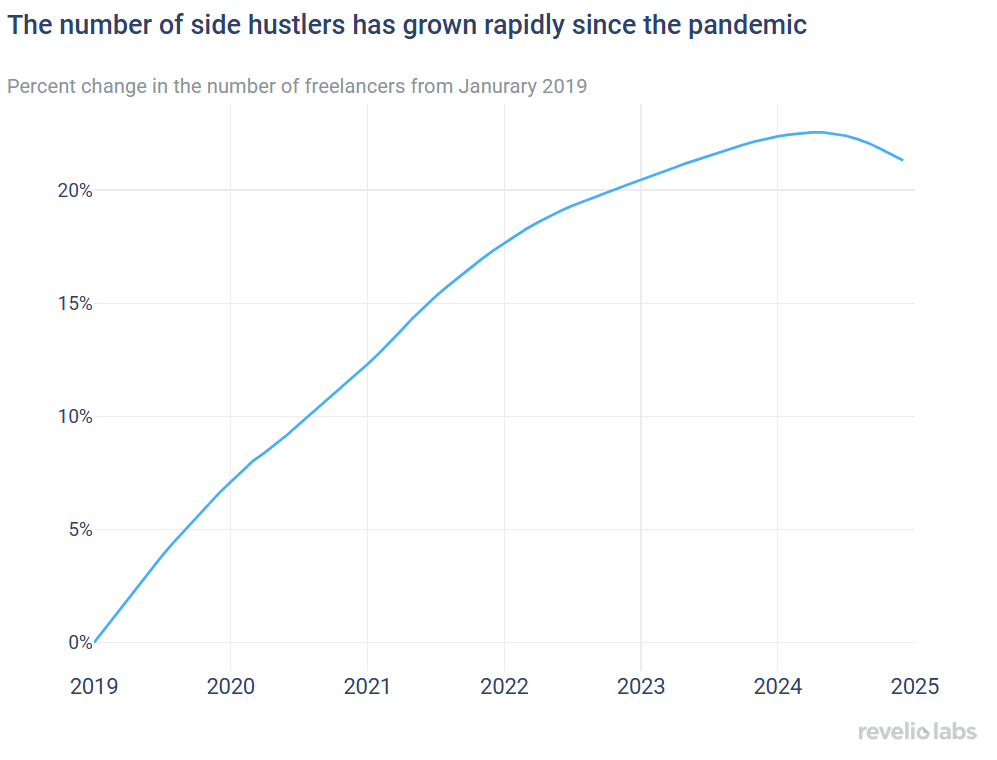
In this analysis workers with side hustle are defined as individuals who hold two overlapping positions—one of which is a freelancing role or a job through platforms like Uber, Lyft, Instacart, and others. Identifying workers with side hustles relies on them reporting their side hustle on their online professional profiles. As a result, the number of side hustlers that we capture may not reflect the full extent of side hustling, as some individuals may choose not to record their second jobs. Nevertheless, our analysis captures a broad spectrum of side hustle activities, providing insights into the different ways people are supplementing their income or pursuing entrepreneurial ventures outside of traditional full-time employment.
Most side hustlers choose gigs that are not closely related to their main occupation. In fact, only 30% of side hustlers take on a role that is aligned with their primary job. This trend reveals that individuals often leverage their skills and interests to explore entirely different fields or industries. This not only allows for additional income but also opens doors to new experiences and career growth outside their primary profession.

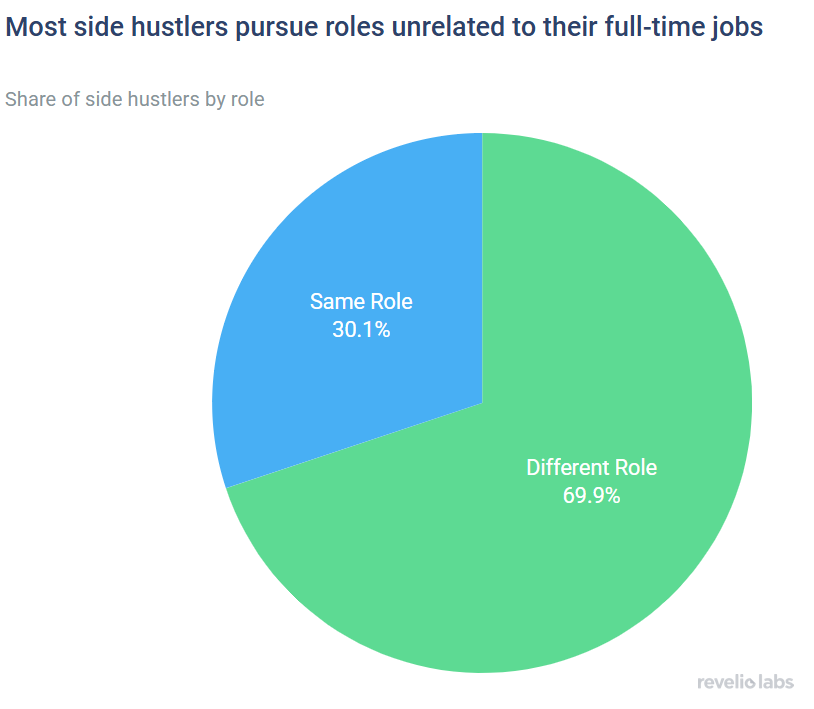
Not all side hustles are created equal: Some roles offer remarkably lucrative opportunities, while others fall short. In some cases, side hustles can even outpay full-time jobs, regardless of the main job. For instance, in consulting roles, earnings from side hustles can amount to as much as 1.7 times the pay that workers get from their main full-time job. In contrast, roles like driving and food delivery only pay 88% of what workers can earn in their full time role. This disparity highlights how certain skill sets enable individuals to monetize their expertise outside traditional employment. Regardless of one’s full-time role or whether it aligns with their side hustle, the fact that some side gigs surpass full-time earnings is reshaping perceptions of what a "side job" can achieve.

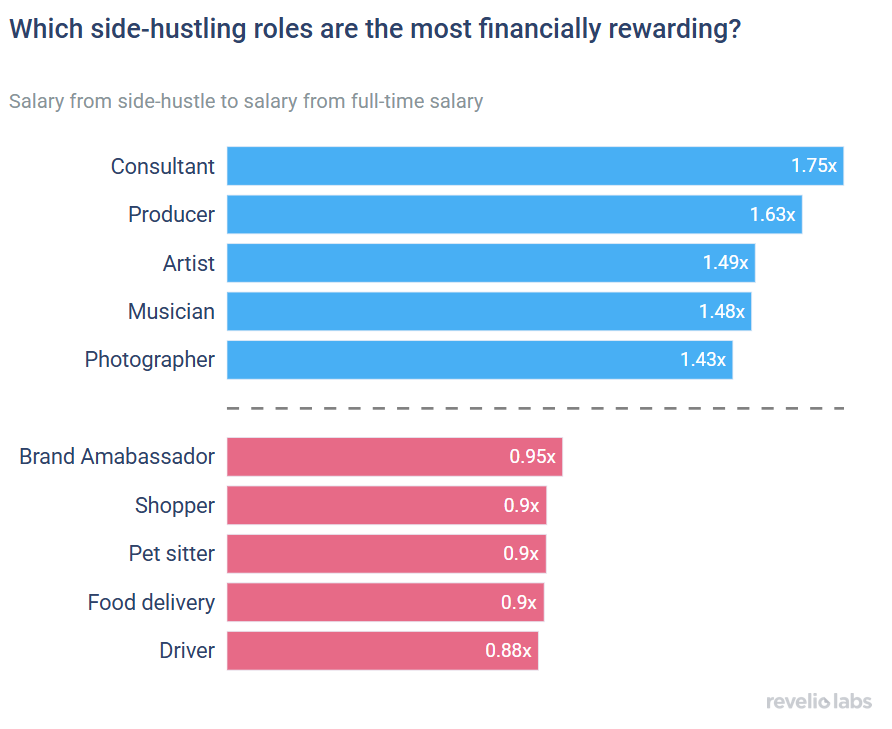
When it comes to the gender composition of side hustlers, women take the lead. Among U.S. workers who currently have a side hustle, 59% are women. Whether motivated by financial necessity, the desire to explore new opportunities, or simply pursuing hobbies and interests, women are more likely to pursue entrepreneurial ventures, highlighting the potential of side hustling as a powerful pathway to economic empowerment. Despite women leading in the number of side hustlers, the difference in income from side hustling between genders is relatively small. Men earn an average of $34.10 per hour from their side hustles, while women earn $32.30 per hour. This narrow gap suggests that side hustling offers a more equitable earning potential compared to traditional full-time employment, where wage disparities between men and women are often more pronounced.

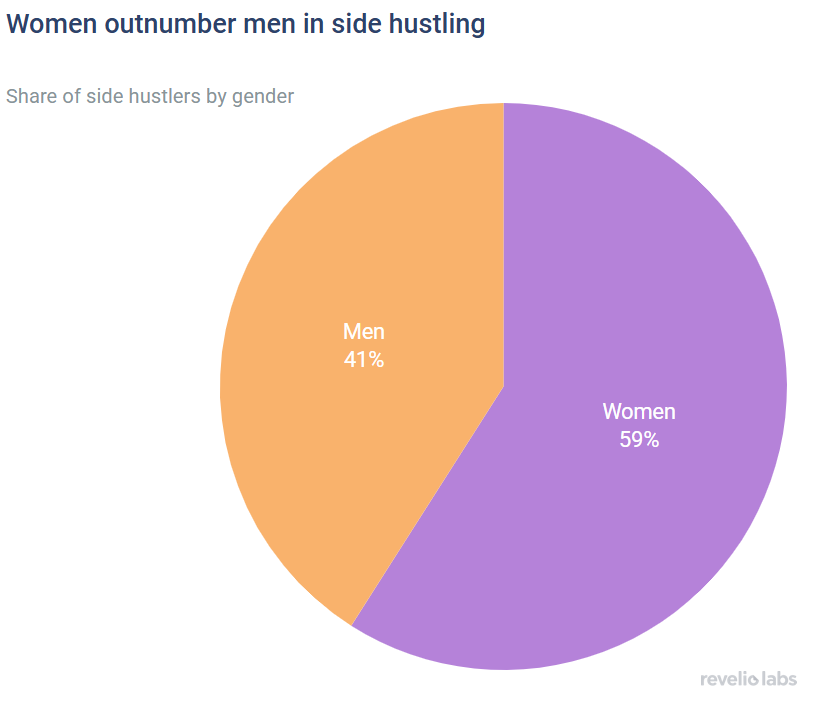
When examining the age distribution of side hustlers, a clear generational pattern emerges for both men and women. For men, a larger share of side hustlers are over 40 years old—belonging to the Baby Boomer and Gen X generations. This could be due to factors like supplementing retirement income or utilizing years of professional experience in freelance opportunities. On the other hand, women who engage in side hustling are more likely to be under 40 years old. This trend could reflect younger women’s drive to explore entrepreneurial ventures or balance multiple sources of income as they navigate career growth and pursue financial independence.

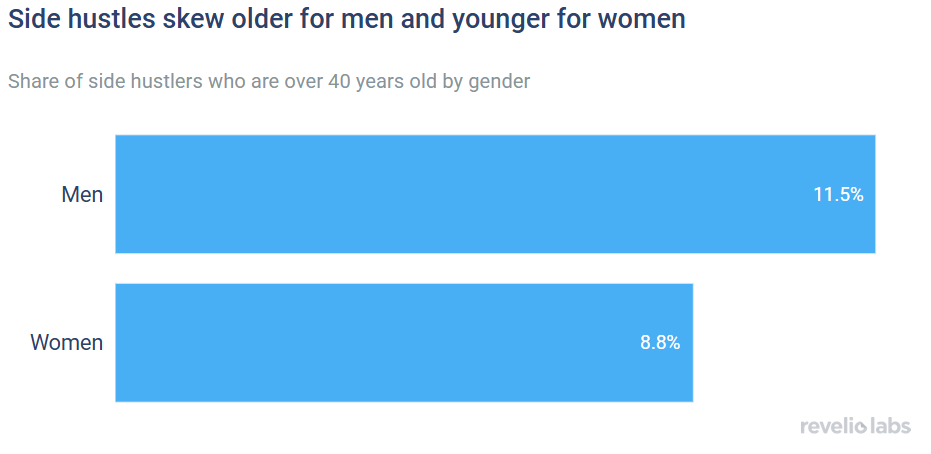
The observed generational differences between side-hustling men and women can be attributed to the types of roles that they tend to choose for their side hustles. Women, particularly millennials, are often overrepresented in roles such as fitness instruction and caregiving, which require less technical experience and offer greater flexibility. These roles align with the needs of younger women who may be balancing family responsibilities, educational pursuits, or the early stages of their careers. In contrast, men, especially Baby Boomers and Gen Xers, are more likely to take on contractor work, which often demands more specialized skills and years of experience. The difference in role preferences shows how age and gender shape the side hustles people choose. Men often gravitate toward roles that leverage their professional expertise, while women prioritize flexibility and roles that align with their personal interests or lifestyle.

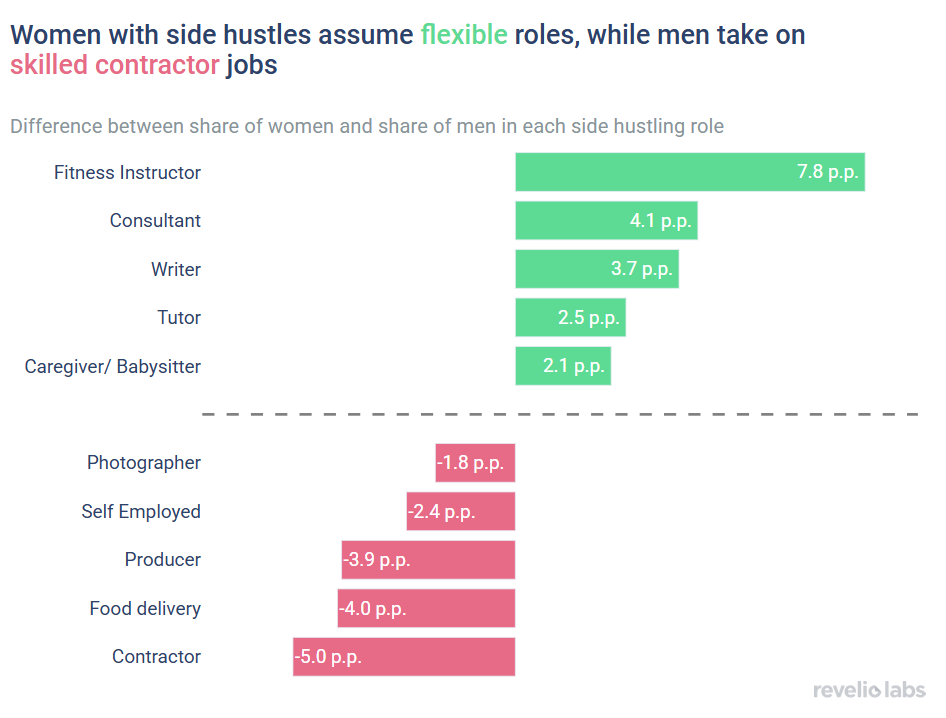
We also see the generational differences between side-hustling men and women reflected in the skills that are overrepresented among men versus women. Women are more likely to be skilled in areas like public speaking and event planning, which often align with roles that can be quickly accessed or transitioned into, especially for younger generations. On the other hand, men tend to capitalize on skills such as project management, construction, and video editing and production—fields that require more experience and expertise. These skills typically take longer to develop, which is why we see a larger share of older men, particularly from the Baby Boomer and Gen X generations, pursuing side hustles in these areas.

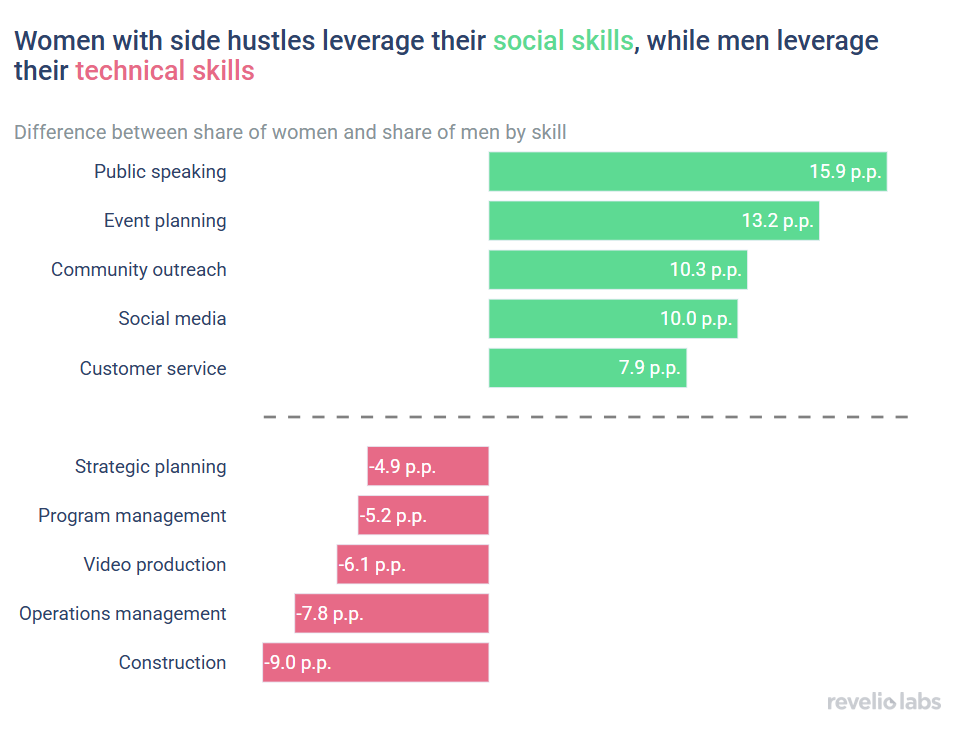
Side hustling is diverse and continuously evolving, reflecting the changing nature of work and how age, gender, and skillset shape individuals' choices. While some roles offer lucrative opportunities, others provide a more flexible path for those seeking to supplement their income or explore new passions. The gender dynamics within the side hustling labor market highlight how these opportunities are reshaping career trajectories, allowing people to diversify their income streams, develop new skills, and pursue entrepreneurial ventures that align with their personal goals and lifestyle needs. Ultimately, side hustling is not just about earning extra money—it’s about embracing new opportunities for growth in an increasingly flexible and diverse labor market.


